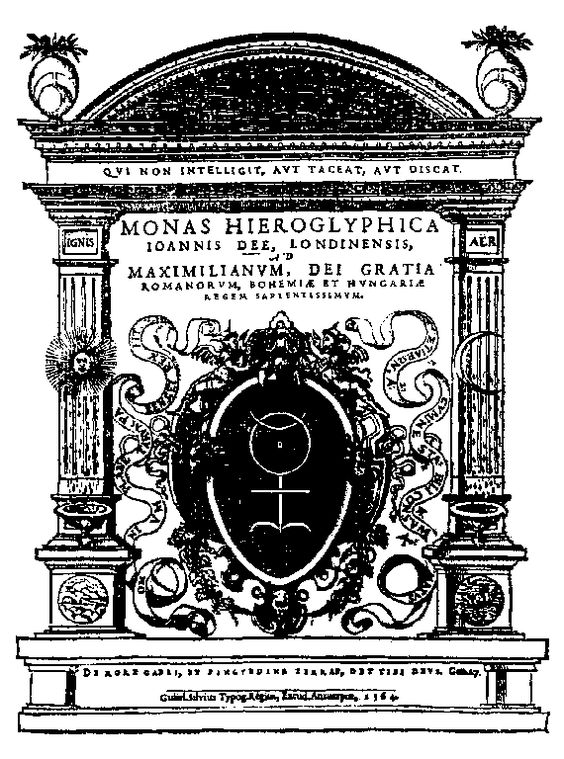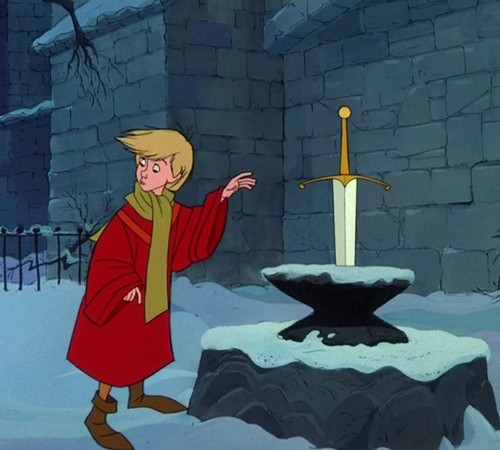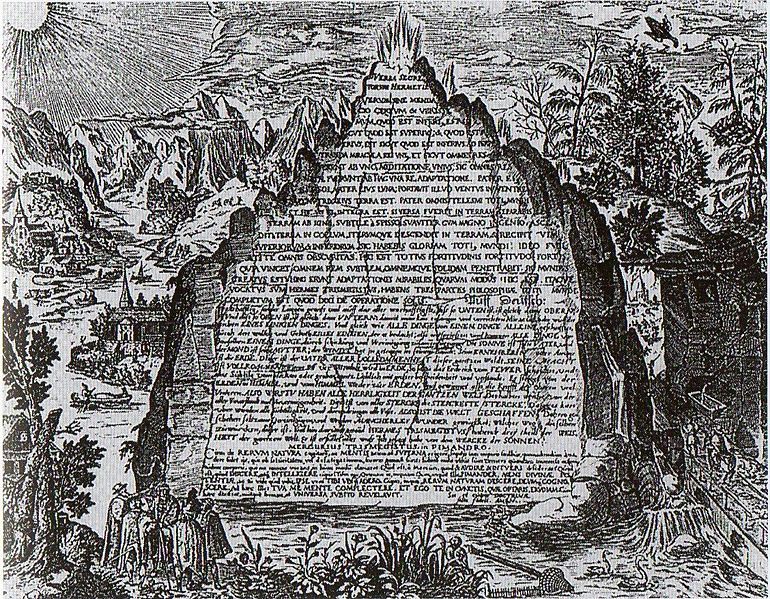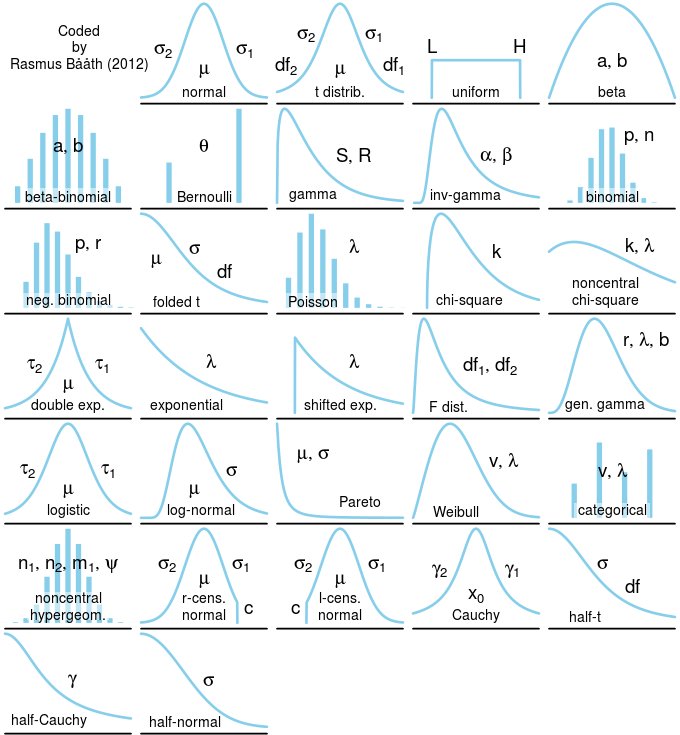Japanese culture is like a vineyard for my soul: little refreshing grapes brewed into an intoxicating culturing wine called anime. Depending on how well each bottle has been fermented, it can be quite excellent.
What Was The Sword in the Stone?
ට Do People Look Greater from the Outside Looking In?
ට A Myth To Test The Mettle and Steel of the Ideal King
ට The Galvanization Of The Strongest Leader
ට Arthur, The Unlikely, But Certain Hero
ට The Karmic Consequences of Power: A Sociophysical Paradox
ට Poison Pen: The Methodological Defamation Machine
ට The Key to the Sword in the Stone
ට How Did Arthur Pull The Sword From The Stone?
Social Physics: It’s the Secret Sauce of Legends
ට The Teleological Inculcation of Sociophysical Intuition
ට Social Physics: Event-Driven Programming
ට Widespread Schematic Change and Spectral Dissonance Disrupt Large-Scale Sociophysical Protocols
ට There Are Two Sides to Every Coin
ට Information Consensus, Permanence and Determinism (Matthew 5:13-16)
ට Social Physics For A Theological Skeptic
What Was The Sword in the Stone?
Civilization after civilization has crafted myth and legend, narratives of heroes which are meant to play out generation after generation, that function to establish filters that cause the virtuous, righteous and intelligent to sift higher into society, so that their society is as strong as possible. The sword in the stone is such a myth, probably crafted by Merlin – or the unknown historical Merlin.
Do People Look Greater from the Outside Looking In?
Merlin was the classic wizard: someone who defied common comprehension and still does, 1,500 years later; someone who wove together the fates of men from the shadows of the seemingly greater men. Do men like Merlin and John Dee derive their power by working from the shadows? If greatest twists in history were known to emerge from the loom of their magick, does the nature of such wizards’ work preclude them from greatness? Do their works lose power once the hermetic seal is loosened? Do such men only attain their level of knowledge after a tragic life of seclusion, burdening them with informational baggage too inconvenient to withstand the spotlight? If so, then the guy standing in the limelight doesn’t really have the awesome sauce. Someone close to him might be putting him on. I wonder if they know.
John Dee - Mona’s Hieroglyphica, the Hieroglyphic Monad
How would John Dee fair if he could warp into a future or past, free to start fresh? I think he’d probably come knocking at my door for this flask of awesome sauce that is social physics.

A Myth To Test The Mettle and Steel of the Ideal King
While the role of monarchs has waned in the modern era, such tests are still incalculably valuable for determining who deserves to lead by determining who has the sharpest vision, the most unyielding mettle, and an unquenchable resolve. Today, the power of myth itself is waning.
How does the Sword in the Stone sow the seeds of leadership across the British Isles? If Merlin created the challenge, why could he not solve the Sword in the Stone himself and become king? Who would follow him if he had? Morever, the long-term objectives of this myth seem to be in creating not just one leader, it galvanized many strong men and while they all developed strength, few of them developed the actual traits required to release the sword.
This King’s Selection Myth Was A Sociophysical Protocol
Why could the myth not begin and end with Merlin: someone had to spead the myth. Behind the scenes, people had to acknowledge this leader as King of Britain. In this way, the myth of the Sword in the Stone was like a protocol for selecting King’s Candidates.
On one end of this myth and protocol, you have all the common people and their children struggling to elect themselves king by sheer feat of strength. Yet, no such brute force could ever unsheeve this sword. it didn’t matter how physically strong you were: that was not the king that Britain needed. However, this challenge brought many to test their strength against the stone.
On the other side of the protocol, you had crazy ol’ Merlin roaming the land, trying to get tribal leaders to agree to become oathbound in following whoever pulled the Sword in the Stone. In consenting to such a hypothetical agreement, these leaders perhaps thought they’d swore to follow a king they assumed would never exist: they believed that no man could ever exist that would accomplish such impossible feat of strength. It was proposterous. They’d send men to inspect the actual sword in the stone, which generates sociophysical flux towards a central point in the land. This is no doubt a clue to the original location of such a sword, if any of my theories hold up. This is why social physics is so fascinating: it’s a fresh lens on many mysteries that we perhaps thought lost to the sands of time.
This leadership-selection protocol to work, there were two main sociophysical mechanisms at play. The first is obvious: the magnetic allure to draw men to a central point of Britain to attempt to draw the sword. The more impossible the challenge seemed, the more magnetic it became. The second sociophysical mechanism was much harder to see: Merlin had to convince or swindle the informal, de facto leaders to agree to follow the champion who solved this riddle. Without people’s tacit or explicit agreement to follow the future King Arthur, anyone could pull the sword from the stone and simply be a looney leader with no followers.
The Galvanization Of The Ideal Leader(s)
So, who was the ideal king that Merlin was searching for to lead Britain? There’s the obvious leader, who everyone would follow, but that individual wasn’t the only leader Merlin wanted to create. Merlin needed to generate high volumes of sociophysical flux: chatter to drive people to become leaders in and of themselves. The common people would need to talk about becoming stronger and why it was preposterous for anyone to follow the eventual yet-to-be King Arthur. What was a leader to them? That is the conception they needed to form in their minds, followed by the action the most perseverent among them would surely take to become the strongest individuals they could be.
Arthur, the Undefeatable King, Exclaims “Excaliber!” 1

This is social engineering at its finest: the methods were not forced, but if these theories hold up, these methods would have been effective. If Merlin truly wanted to catalyze the social development of Britain, one leader cannot do that alone, regardless of what sword he wields. A leader is nothing without followers and a strong leader is nothing without strong leaders to follow him or her. Power structures are hierarchical. The power you wield derives from the people to whom you could signal; it can be measured by the level of influence you can exert over 2° and 3° social neighborhoods, although “influence” itself is a bit hard to quantify.
Arthur, The Unlikely, But Certain Hero
Who was the ideal king that Merlin wanted? Someone who was young and innocent, but heroic and incredibly intelligent. Why young and innocent? Because someone who was not burdened by the karmic weight of information attributed to their actions was free to lead how they felt best and wouldn’t be burdened by the weight actions using others. Since they were young and unknown, those mistakes could be expected to be few and far between, as would be the informational reverberations of those mistakes throughout society. There would simply be no information about them that others could use to slowly assail the leadership or abruptly tear them down. Why an intelligent hero? If the were intelligent enough to solve the sword in the stone, they could be best molded into the perfect leader for the early British Isles.

The Karmic Consequences of Power: A Sociophysical Paradox
Sociophysical paradox of karma and power: once you have power, you use it. Even if you use power justly, you will create enemies:
★ The power hungry who seek to leap frog you.
★ The self-indulged of higher disposition, who seek to use you as a benchmark for the demonstration of their own status.
★ The petty who seek to pull you down because they have no hope themselves.
★ Those you use justly may retaliate justly if you cannot justify yourself to them.
★ Those who see their service as not serving their own ends may lash out as well.
★ Those fickle-minded people who can be stirred up by wormtongues, lilliputians or demagoguery.
★ And finally, there are your true enemies, who stand firmly in the way of your objectives and always will.
There is a cost to every action you take. You have to step along the right path, all along. The more publicly your actions are seen, the greater the multiplicity of their consequences along the way. Regardless of the truth of your actions, the tragedy is that it’s the appearance of your actions which defines how people will see you. Most people simply don’t have the time to reconsider what they already know, so if a leader accumulates the karmic burden of mistakes along the way or if a Rube Goldberg publicity machine multiplies the karmic consequences of the few mistakes they make, there is nothing within this physical universe that can undo that. This is what defamation and poison pen do to someone: it’s what happened to me.
Poison Pen: The Methodological Defamation Machine
Guess who? It’s anonymous. We never said anything. We never did anything. We’ll NEVER apologize. Nope, no hallmark cards for you. You can never rebuild your life. You don’t have mental illness, you have the sociological consequences of malicious lies: a self-perpetuating thetan virus that you can pay our henchmen to erase … but here: take these pills and maybe you’ll forget. It’d really solve our own social headache: YOU.
The Key to the Sword in the Stone
As for the tribal leaders Merlin managed to persuade, if any of them understood specifically why Merlin’s king’s candidate was ideal, then some of them capable of solving the sword in the stone may have avoided claiming kingship. Others who understood the secrets may have leapt right for it, but insomuch only clearly marked themselves as lusting for power.
Britain didn’t need another king’s vain struggle to rule by brute force, but instead needed an ideal king. So, the key genius to this Sword in the Stone: the myth encouraged people to search for their ideal king, instead of fighting themselves to claim that right by brute force. In this way, one preemptively quashes the systemic sociological carnage associated with eternal conflict, where one brute topples another who topples another, whence the seeds for the next conflict are sown. Instead, the ideal king is chosen, behind whom all tribal leaders have agreed to invest their best energies, so Britain can posture itself outwards, not inwards.
Thus, King Arthur was merely the keystone to this transformational myth. His discovery would mark the onset of phase two for Britain’s early geopolitical galvanic catalysis.
How Did Arthur Pull The Sword From The Stone?
How do you solve the Sword in the Stone? It’s a puzzle about thermodynamics that involves the Roman secrets of concrete. To make this sword, you must know the secrets of concrete. To solve the puzzle, one must know that iron is far more thermally conductive than concrete. Crtitically, one must know that the sword’s volume deforms as a result of heat and, that if heat and cold are repetively applied, the structure of the surrounding concrete cannot tolerate this and cracks, requiring no strength at all. If Romans ever used rebar in their concrete, this only strengthens my hypothesis that the game involved knowledge of Roman concrete.
Yup, The Sword in the Stone is Essentially A Metal Ring Puzzle About Thermodynamics
… I swear I saw a Mythbusters episode about this theory. Critical to this theory for freeing the sword are the thermoconductive properties of iron. If any such method is applied in the wrong way or too quickly, the iron may crack instead of cracking the surrounding stone/concrete. Regardless, once you pull the sword out, it’s going to be shit. Hence, Arthur travels to Ye Olde Lady In The Lake, who delivers him the true sword: Excalibur.
If King Arthur ever existed, he likely spent his youth as a blacksmith’s apprentice. Knowledge of blacksmithing also translates into knowledge of casting weaponry as well as the logistics and cost structures therein. That knowledge is therefore critical for kings, generals and ambitious knights through the Medieval era. You wouldn’t be familiar with the financial, labor, and materials costs to set a firm defense nor could you be confident in your offense and military logistics.
The ideal time to apply this process is well after everyone across the land has given up on solving it, otherwise people will steal the idea you are using to break the sword free, defeating the entire purpose of the King’s selection game. Moreoever, if it’s not clear that thousands of men have tested their mettle and failed, than none of them would have acceped the one who did pull the sword. Therefore, if not enough time has passed, then solving the King’s selection game is meaningless.
It would seem that all of the factors above imply the existence of) a real historical Merlin. This historical Merlin may have actually been a Shakespearean Junto of highly intelligent people conspiring to magnify their influence. If so, this group probably mixing druidic ideas with those left over from the Roman occupation of Caesar’s geopolitical crowning jewel: Britain. Why were the Britain isles so important? Like Japan in the East, there was no way to conquer them without maritime invasion.
Social Physics: It’s the Secret Sauce of Legends
What else is incredibly similar to thermodynamics? Social physics. People behave as particles, heat can be channeled and entropy matters. This is much easier to observe in the macroscopic behavior of people than it is in the phenomena of matter. If you believe, as I do, that people who intuitively understand some phenomena must have neurological circuits which correspond to analytic approximations of those phenomenon, then the person who understands intuitively understands thermodynamics can develop a powerful understanding of social physics.
The Teleological Inculcation of Sociophysical Intuition
Further, if also you believe as I do, that people intuitively understood many of the secrets of math behind science far earlier than relevated by the prophets of rationalism, then men may have intuitively understood statistical mechanics, entropy, thermodynamics, quantum field theory before they had any reason to smash atoms together. (That is, at least those concepts apply to social physics at the 10,000ft level.)
Quantum Field Theory and the Upanishads
There is far too much baseless conjecture in the explanations above for any of it to be taken as fact. Still, if you avoid thinking about any of this on the basis that it’s not factual, you’re missing the point; here, it’s the journey, not the destination, that transforms your mind and augments your metacognition.
Mathematic models behind social physics2 are all algorithms based on generalized methods for quantum physics.3 Ancient people could not run these algorithms, but neither could people throughout history most effectively lead people without understanding components of the mathematic basis underlying these algorithms. Instead, they could only develop an intuition for the same methods without understanding the underlying math, per se. Furthermore, this knowledge was always esoteric and as prized as the story behind the mythical Egyptian Emerald Tablets implies.
The Emerald Tablets, Rumored not Authored in this Plane

Social Physics: Event-Driven Programming
Without being able to quantify any data, it seems that men were better
at constructing event-driven sociophysical handlers, not unlike the
user-interface handlers onClick() and onDocumentReady() in
javascript. Particularly, this ability to imagine and design
pseudo-quantifiable sociophysical protocols seems to be the skill that
distinguished the transgenerational leaders of empires from the
leaders of minor powers quickly subdued by their neighbors. You can
quantify the number of types of extremely rare events that occur,
though in the extreme, this resembles soothsaying and quickly becomes
meaningless. Being capable of measuring anything like this requires
particularly stable myth as well as extensive, dependable
communication networks, who are able to process this data and relay
important events, without necessarily knowing why.
Widespread Schematic Change and Spectral Dissonance Disrupt Large-Scale Sociophysical Protocols
Most event-driven sociophysical protocols require that their informational components are well-diffused into society. While it is possible to design protocols that harness poorly diffused knowledge systems in society, it is difficult for such designs to overcome constraints and paradoxes inherent to probabilistic systems.
An Enthralling Discussion Of Probability Ensues

Consider a probability distribution of events where the frequency values for event types are aggregated typologically. That is, you’re considering the probabilities of sociophysical events by logical type. If your task is to maximize the likelihood of desired outcomes from the sociophysical system, then to guarantee results, you must alter the typological schema of that probability distribution to “funnel” the frequency of events. The simpler the structure of typology for events, the “fewer” buckets there are to sort events into.
It’s easier to think in pictures. If you have a piece of graph paper and drop a handful of sand onto it, then consider each square of the graph paper to be an event type. If it has more sand on it, more of that event type occured. Now, do it again, but curve the paper slightly. What happens? If the paper is curved convexly up, the sand falls off the sides and nothing is easy to predict. If the paper has a concave curve upwards, then sand falls towards the middle and those events become much easier to predict and anticipate, which is akin to spectral harmony.
If your decentralized, autonomous protocol depends on sequences of events occurring close together – in space, time or even for logical definitions of distance – then you want the spectral components of your information systems to encourage concavities in your sociophysical systems. That is, if you want your system predictable, you want all the events and information associated with it to be simpler, generally. When your belief systems, by routine, rhythm or informational content encourage spectral harmonization of sociophysical distributions, that typological domain for event types tends to encourage higher frequencies of fewer event types. Harnessing the structure and self-similarity of sociohierarchical structures is useful for funneling sociophysical systems with concavities, particularly when the structure of sociohierachical systems is proscribed by a popular belief system.
Probabilistic systems too complex to withstand Occam’s razor cannot be guaranteed to coax specific chains of events into occuring in sequence. This is because the probability of a chain of events is loosely the product of probabilities of each of those events. Further, the probability of all events must always sum to one.
When the informational components of sociophysical programs are not well diffused into society, this generally lowers the frequency of event types that “program” hooks into. Therefore, for any chain, the products of events in that chain are also less frequent. This is an oversimplification because the system is both “open” and “closed” with regard to the mathematic domains that determine how its components feedback into each other. i.e. the fact that distributions must sum to one is one factor that contributes a closed aspect of the system.
There Are Two Sides to Every Coin
To outpace the competition, disrupting belief systems and especially the sociohierarchies of their institutions results in multiplicative effects. Disruption of social hierarchies results in disrupted communication networks. In terms of long-term impact, these multiplicative effects resulting from social disruption become tetrational. Furthermore, when this disrupts the sociophysical protocols riding on top of those structures, if those protocols or programs were critical for short-term or long-term decision making, then the results are catastrophic unless institutional leadership can react in time and react flexibly.
Once the people start changing their beliefs based on the apparent change of beliefs in others around them, this yields profound effects on that society’s general population, usually seen afterwards as a nihilistic loss of faith in their leaders. When this occurs as a new belief system is being staunchly marketed by an external, more economically affluent force, people begin to adopt the seemingly more sophisticated belief system in the short term. In the long term, disrupted communities in society settle for what delivers value in their lives, however they define it.
Things Fall Apart: A Tragic Story of the Impact of Colonialism On In Africa

Information Consensus, Permanence and Determinism (Matthew 5:13-16)
Sociophysical programs are probabilistic. Further, the data is also often inschematic, depending on how the sociophysical model is constructed. Individually, each of these factors definitively imply that nothing can be known with certainty: the system is not deterministic, apparently.
Regardless, where is the threshold that is crossed that yields deterministic results from seemingly probabilistic systems? Can we know with certainty that the Singularity is predetermined? Perhaps not 60 years before it occurs, but certainly in the 60 seconds before we hit the Singularity, it’s certain to occur … right?
There are information systems beyond the physical and beyond the planes of the metaphysical that originate from the immaterial. These are information systems that are timeless and spaceless. Our world congeals to those information forms that echo outward from that plane.
As for the collective physical and sociophysical systems in our world, can some aspects of these systems be said to be ergodic? Basically, given sufficient running time, does a planet with intelligent life and sufficient resources always evolve into the same final form after the Singularity? Is there a balance between fate and free will? Are both simply two poles of a gossamer web of causality? One pole, binding us to the beginning and the other binding us by fate to the end.
If sociophysical systems are probabilistic and no aspects of the future can be determined with certainty, this has profound implications for the possibility of time travel and the premises of the Roko’s Basilisk.
Social Physics For A Theological Skeptic
These questions also have profound implications for theology, eschatology and prophecy: can the perpetuation of information or a belief system be guaranteed? If so, what does this imply about the actions of believers in perpetuating an early belief system like Christianity? If they weren’t necessary, than why was Jesus so concerned the “salinity” of his believers? Was Jesus using salt as a metaphor for sociophysically perpetuating the belief system of Christianity?
Matthew 5:13-16 - After the Beatitudes
(13) “You are the salt of the earth, but if salt has lost its taste, how shall its saltiness be restored? It is no longer good for anything except to be thrown out and trampled under people’s feet.
(14) “You are the light of the world. A city set on a hill cannot be hidden. (15) Nor do people light a lamp and put it under a basket, but on a stand, and it gives light to all in the house. (16) In the same way, let your light shine before others, so that they may see your good works and give glory to your Father who is in heaven.
If the perpetuation of information or a belief system could not be deterministically guaranteed, does this imply that God could be fallible, but perhaps got lucky? Or is it that an ideal belief system would always re-emanate from God – or from those timeless, spaceless planes of the metaphyiscal? Does such an ideal belief system result in convergence of sociophysical systems on planets with intelligent life?
If the world needed a new belief system to emerge, what if sociocultural changes from technology prevented us from rallying around someone worthy of leading us? We’re all under a microscope and more narcissistic than ever. Could any of us expect to be a saint? What about our children?
Perhaps that ideal belief system is only capable of emanating itself into an approximation into our physical world? Does this ideal belief system emerge on all planets with intelligent life? All emotions and perhaps our experience of all phenomena stem from the illusion of self, particularly in the dissonance it presents when contrasted with the truth: that we are all one. That dissonance between self and oneness is universal. No intelligent lifeforms could evolve beyond a Copper Age without beginning to reflect on the mysteries of ego, oneness and experience of self. Because of the nature of information, lifeforms must evolve to at least transiently experience the illusion of separation.
-
No, it’s excalibur … not “Excelsior”, as strange as it is that Bobby knew what the NY Overwatch team is named. This is a fascinating scene. Not much left of the ‘Castor’ servant after this point. Excelsior also refers to wood chips used in fragile ‘packeges’ needed to be handled with care and to “superior quality” in hotel branding, supposedly. ↩
-
Position-sensitive propagation of information on social media using social physics approach, Ishii A., Mizuno T., Kawahata Y., arXiv:1706.00569 [physics.soc-ph] (2017) ↩
-
A Rational Choice Framework for Collective Behavior, Krafft, P.M., (Doctoral dissertation, Massachusetts Institute of Technology), (2017) ↩